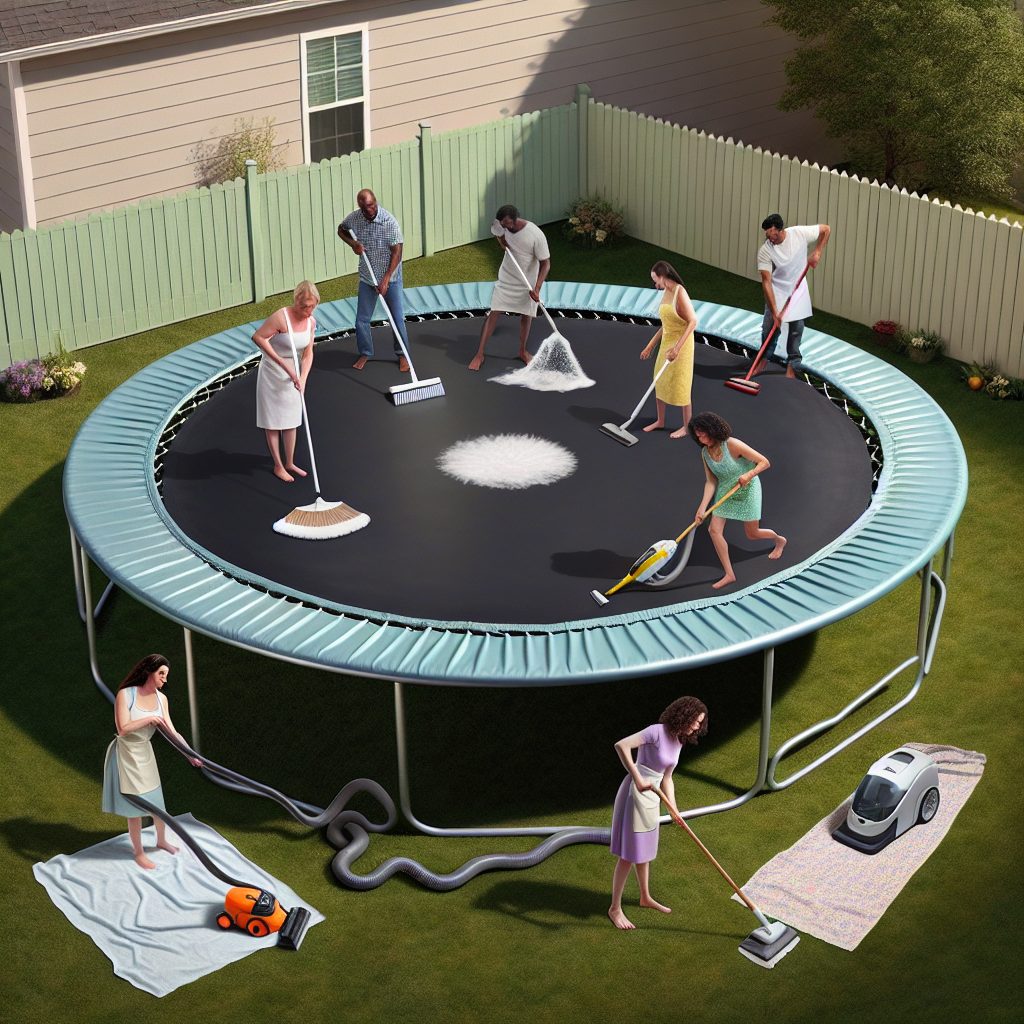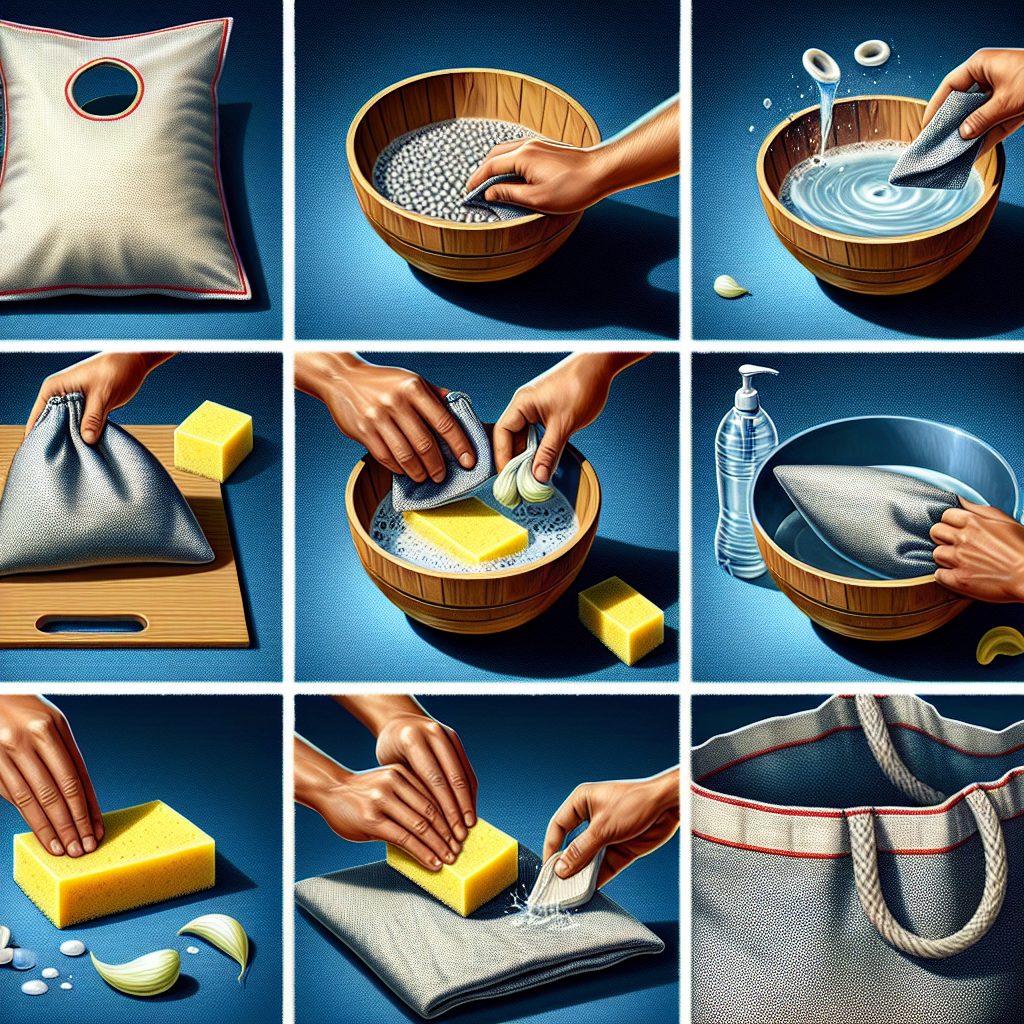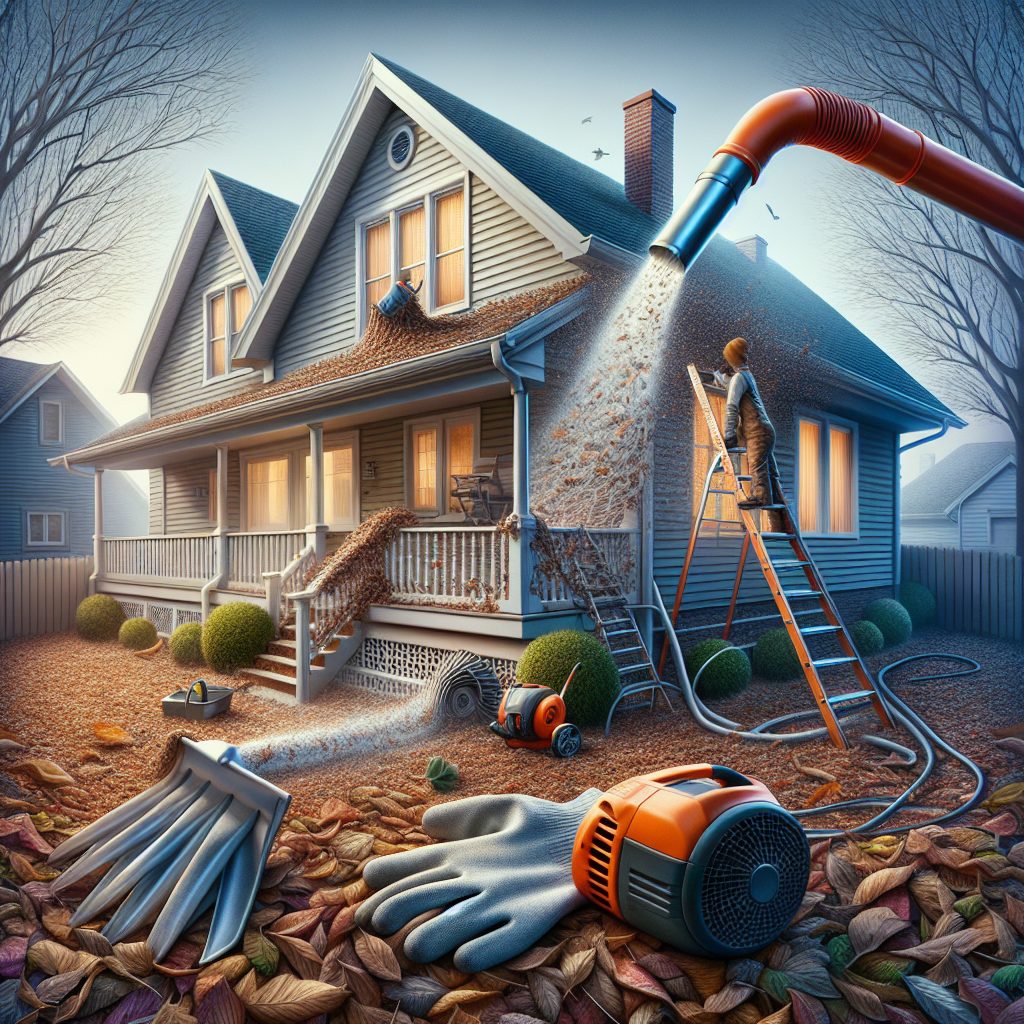
Jumping into the exciting world of trampolining offers not only a world of fun but also a universe of fitness benefits. However, the bouncy adventures can be cut short if the trampoline becomes a haven for dirt, debris, and even mildew. Understanding the impact of these uninvited guests on your trampoline goes beyond mere aesthetics. A clean trampoline is not only more inviting but also safer and can significantly extend the life of your equipment. With the right cleaning techniques, you ensure that every leap and bound is on a surface that looks good and performs even better, safeguarding both your investment and the jumpers.
As we dive deeper into the realm of trampoline maintenance, we’ll unveil the essential steps to keeping your bouncing haven in pristine condition. This isn’t just about brushing off leaves or hosing down the mat; we’re talking about a comprehensive guide that covers everything from the correct cleaning agents to the frequency of deep cleans. Prepare to be equipped with invaluable insights that will transform you from a trampoline owner into a trampoline care expert. Coming up are key takeaways including a list of necessary tools, step-by-step cleaning instructions, and even some pro tips on how to tackle stubborn spots—all designed to keep your trampoline at its peak performance, ready for every flip, jump, and family fun day.
Key Takeaways
1. Regular cleaning is essential for maintaining the trampoline’s safety and prolonging its life. This involves sweeping off leaves, debris, and dirt before each use to prevent the material from getting scratched or worn out. Additionally, checking for any mold or mildew, especially after wet weather, and removing it promptly is crucial to prevent the spread and maintain a hygienic surface.
2. Use mild soap and water for the cleaning process, avoiding harsh chemicals that could damage the trampoline’s materials. Apply the soap solution with a soft brush or cloth, scrub gently, and rinse thoroughly with a hose. For more stubborn spots, a soft-bristled brush may be required, but one should avoid using abrasive tools that could cause tears or wear.
3. When cleaning the trampoline’s frame and springs, make sure to check for any rust or corrosion. If rust is present, use a rust-removing product appropriate for the trampoline’s material, apply it according to the manufacturer’s instructions, and rinse it off thoroughly. Regular inspection of all parts, including pads and nets, can be combined with the cleaning process to ensure safety and functionality.
4. After cleaning, allow the trampoline to air dry completely before use. This not only prevents slipping accidents but also ensures that no moisture is trapped within the components, which could lead to rust or mold buildup. If the trampoline is used frequently, a schedule for deep cleaning should be established, which might range from a few times per season to monthly, depending on usage and exposure conditions.
5. Disassemble and store your trampoline during extreme weather conditions or prolonged periods of non-use. This approach minimizes weather-related damage and reduces the frequency of intense cleaning sessions. When disassembling, follow the manufacturer’s guidelines carefully, and store all parts in a dry, clean place to prevent any damage or loss of components.
What Are the Best Methods for Thoroughly Cleaning Your Trampoline?
Gathering Your Cleaning Supplies
To ensure a thorough clean, you will need a bucket, warm water, a gentle detergent or dish soap, a soft-bristled brush or sponge, a garden hose with a spray nozzle, and potentially a pressure washer for tougher grime. Additionally, gather old towels or rags for drying, and consider a trampoline cover for protection after cleaning.
Initial Surface Debris Removal
Start by removing any loose debris such as leaves, twigs, and dirt. Sweep the surface with a soft-bristled broom to prevent scratching the mat. For a trampoline with an enclosure, ensure you sweep off debris that may have been caught on the netting as well.
Applying Your Cleaning Solution
Mix warm water with a gentle detergent in your bucket. Avoid harsh chemicals that may damage the trampoline mat or cause skin irritations. Dip your soft-bristled brush or sponge into the solution and apply it to the trampoline mat, working in sections to prevent the soap from drying.
Scrubbing the Mat and Frame
Use the brush or sponge to scrub the mat in circular motions, focusing on stained or moldy areas. Be thorough but gentle to avoid fabric damage. Extend your cleaning to the frame, using a softer cloth to wipe down the springs, to prevent rusting.
Rinsing the Trampoline
Use a garden hose with a spray nozzle to rinse off the cleaning solution. Start at the top and work your way down, ensuring all soap residue is washed away from the mat, springs, and frame. For stubborn grime, a pressure washer on a low setting may be used with caution.
Drying the Trampoline
After rinsing, let the trampoline air dry, or use old towels to wick away excess water. Ensure the trampoline is completely dry before using it to prevent slipping hazards and to prevent the development of mildew and mold.
Maintaining Your Trampoline Post-Cleaning
To keep your trampoline clean and safe, routinely remove leaves and debris, and consider investing in a trampoline cover for when it’s not in use. Regularly inspect the mat and springs for signs of wear and tear, and replace any damaged parts promptly to avoid accidents.
Seasonal Care for Trampolines
Adjust your cleaning routine with the seasons. During fall, increase debris removal frequency, and during winter, if your region experiences snow, regularly clear any snow off the trampoline to prevent damage from the weight and moisture.
How Often Should You Clean Your Trampoline?
Schedule deep cleaning for at least once a season, with light cleanings as needed month-to-month or after heavy use. Regular maintenance ensures a safe and inviting jump space for everyone.
Frequent Inspection and Spot Cleaning
Conduct regular inspections for potential issues such as loose springs or minor stains. Address these promptly with spot cleaning or tightening as needed to maintain a pristine jumping area.
Special Considerations for Indoor Trampolines
Indoor trampolines may not encounter the same outdoor debris but can still collect dust and need routine cleaning and maintenance, similar to outdoor models, to ensure longevity and safety.
Are There Any Safe Cleaning Agents You Can Use on Trampolines?
- Vinegar and Water Solution: Mix equal parts for an eco-friendly and effective cleaner.
- Baking Soda Paste: Create a paste for spot treating tough stains without harsh chemicals.
- Rubbing Alcohol: Useful for sanitizing the mat and handles, especially in public or shared spaces.
- Lemon Juice: Natural sanitizer that can also help eliminate odors from your trampoline.
What is the best way to clean the trampoline surface?
The optimal way to clean a trampoline surface is to use a soft-bristle brush or a cloth with mild soap and warm water. Gently scrub the mat in circular motions to remove dirt and debris, and avoid using harsh chemicals that can damage the material.
Can I pressure wash my trampoline?
It’s not recommended to pressure wash a trampoline as the force of the water can damage the stitching and the mat. Instead, use a garden hose with a gentle spray setting to rinse the surface after scrubbing.
How often should I clean my trampoline?
Regular cleaning is advised to maintain the trampoline’s condition and safety. A thorough cleaning every 1-2 months is sufficient, but you may need to clean it more frequently if it’s used often or exposed to a lot of dirt or tree sap.
Is it necessary to remove the trampoline’s protective padding when cleaning?
Yes, removing the protective padding is necessary to thoroughly clean both the padding and the trampoline mat underneath. The padding can be cleaned separately using the same mild soap and water solution.
Can I use bleach to clean my trampoline?
Using bleach is not recommended for cleaning trampolines. Bleach can weaken and degrade the mat fabric and the stitching over time. Stick to mild detergents for safer, less abrasive cleaning.
What should I do to prevent mold and mildew on my trampoline?
To prevent mold and mildew, ensure the trampoline is completely dry after cleaning before covering or storing it. Additionally, regularly check for water pooling on the surface and clear it to mitigate mold growth.
How can I protect my trampoline from dirt and debris?
Using a weather cover when the trampoline is not in use can significantly protect it from dirt, debris, and the elements. Position your trampoline away from trees to reduce the amount of leaves and sap that may fall onto it.
Can I leave my trampoline outside during winter?
Yes, trampolines can be left outside during winter, but it’s crucial to remove any snow build-up to prevent excess weight and potential damage. It’s also advisable to use a weatherproof cover for extra protection.
What’s the safest way to clean a slippery trampoline?
If your trampoline has become slippery, clean it with a mild detergent and warm water without saturating the surface. Rinse well and allow to dry completely. Regular maintenance can prevent build-up that leads to slipperiness.
Are there any trampoline-specific cleaning products I should use?
While there are no mandatory trampoline-specific cleaning products, choosing a cleaner designated for outdoor fabrics can be beneficial. Always ensure the cleaner is non-toxic and suitable for trampoline materials.
Final Thoughts
Keeping your trampoline clean is essential for ensuring its longevity and the safety of its users. With the right methods and a consistent cleaning routine, you can maintain your trampoline in good condition for many years of enjoyment. Always consider the materials of your trampoline when selecting cleaning solutions and be gentle during the cleaning process to avoid unnecessary wear and tear.
In conclusion, remember that regular maintenance does not only contribute to the cleanliness but also allows you to inspect the trampoline for any potential issues. By taking care of your trampoline properly, you protect your investment and ensure that the fun continues safely for everyone. Happy bouncing and cleaning!



